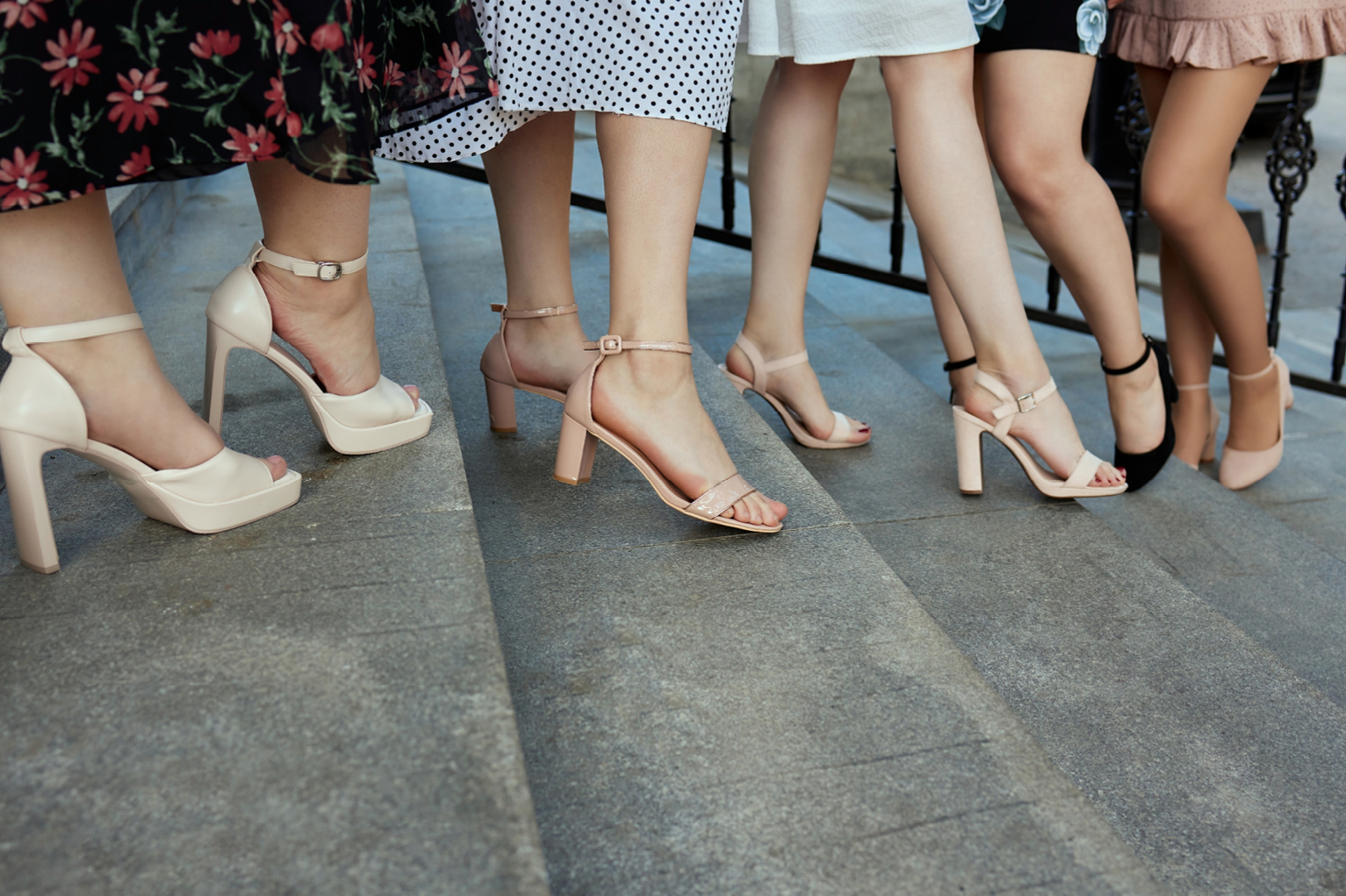
1,000 Steps for 100 Days in High Heels May Help Improve Walking
April 10, 2024
By Chloe Arrington
High heels position the ankle in a plantarflexed state with the toes pointing downwards, causing calf muscle tendons to operate at relatively short lengths. Habitually operating muscle tendons at relatively short lengths induces structural remodeling that theoretically affects muscle metabolism.
Researchers at the Georgia Institute of Technology, including Gregory S. Sawicki, Joseph Anderer Faculty Fellow and associate professor in the George W. Woodruff School of Mechanical Engineering, and recent graduate Jordyn Schroeder, Ph.D. ME 2023, have seen evidence that the regular wearing of high heels demonstrated changes in the calf muscle and Achilles tendon providing further functional benefits.
The research, conducted in collaboration with Owen Beck, assistant professor at the University of Texas, Austin, was recently published in the Journal of Applied Physiology. Beck is a former member of Sawicki’s Physiology of Wearable Robotics (PoWeR) Lab where he was a postdoctoral fellow.
The study was developed from Schroeder’s initial doctoral work using a musculoskeletal model and computer simulations to show that long-term use of ankle exoskeletons may alter the properties of the Achilles tendon.
“This project was centered on answering big questions about how structure and function interact and impact locomotion on short-term and long-term time scales,” said Schroeder. “We used iterative brainstorming sessions about expanding my modeling to longitudinal human studies and landed on using modified shoes as a creative tool to investigate these research questions. These shoes allowed us to shift calf muscle-tendon dynamics in participants during their daily lives instead of being confined to a laboratory.”
The study fitted eight participants, both male and female, with high-heeled wedge shoes custom built by Schroeder and Kinsey Herrin, senior research scientist in the Woodruff School and board-certified prosthetist/orthotist. According to Herrin, the fabrication of custom-built shoes that highly active individuals would be able to wear in their busy lives over three months required significant technical skill and attention to detail.
“Jordyn’s ability to accomplish this alongside tackling a tough scientific question is truly impressive and a testament to her tenacity,” said Herrin.
Once outfitted with their shoes, participants were asked to wear the experimental footwear daily for 14 weeks. Prior to joining the study, participants self-reported either no experience wearing high-heeled footwear or rare high-heel use. Throughout the intervention, participants were instructed to use an activity monitor and log their daily step totals with and without the high heels and periodically returned to the lab for measurement sessions to see how muscles, tendons and walking behavior changed over time.
After 14 weeks, volunteers who had given up early on wearing the heels showed no changes in their legs or walking, but those who wore the heels consistently tended to have shorter calf muscles and stiffer Achilles tendons than before and the habitual heel-users became more economical during walking in both heeled and flat footwear. Participants who took at least 1,500 daily steps in high heels for 99 days reduced their metabolic energy expenditure during walking in flat-soled footwear in post-intervention testing.
Those wearing the heels seemed to become “more metabolically economical human beings,” said Beck in a recent article in the Washington Post discussing the research. Beck also explained the study’s findings could be meaningful to those with mobility concerns such as the elderly, by making walking feel "less effortful" and encouraging more activity.
“This was the most ambitious experimental protocol ever attempted in the PoWeR lab to date, both for its length and breadth of measurements," said Sawicki. "It really required an all hands effort and set the bar high for what is possible in terms of long-term structure-function studies with human participants. We hope to carry out similar research with wearable robotic devices next.”
The research also caught the attention of late-night talk show host Stephen Colbert, who recently featured it in his recurring Late Show segment, The Sound of Science.
About the Research
The research effort at Georgia Tech was co-led by the team of Jordyn Schroeder, Ph.D., now a principal consultant at McKinsey and Owen Beck, Ph.D., now an assistant professor at the University of Texas, under the guidance of Gregory S. Sawicki. Kinsey Herrin, CPO, a research scientist at Georgia Tech contributed to the construction of the high-heeled footwear. Research reported in this publication was supported by the National Institute on Aging of the National Institutes of Health under award numbers F32AG063460 (to Owen Beck, Ph.D.) and R01AG058615 (to Gregory S. Sawicki, Ph.D.) with a Diversity Supplement (to Jordyn Schroeder, Ph.D.).
